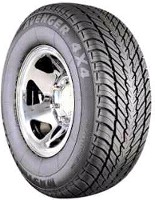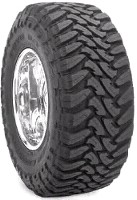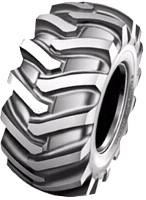 It should be obvious that the treads on a tire increase your traction. However, they don't do it by increasing the frictional force. And there's more to it than that. In some circumstances, treads can actually decrease traction. Let's look at traction from the point of view of friction, as you have learned about it in physics class.  The friction between two surfaces (or the traction applied by a tire) can be increased in two ways:
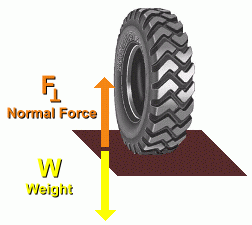 The normal force is the force pushing up on the tires. Caused by the weight of the vehicle and tires, it is in fact equal in size (but opposite in direction) to the weight pressing down on the ground.
The normal force is the force pushing up on the tires. Caused by the weight of the vehicle and tires, it is in fact equal in size (but opposite in direction) to the weight pressing down on the ground.The greater the weight of the vehicle and tires, the larger the value of the normal force, and as a result, the larger the friction force. However, since the weight of the tires is only a small percent of the total weight of the vehicle, tires that weigh more only cause a small increase in traction. Nevertheless, a very light vehicle with light tires would have little traction. 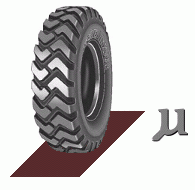
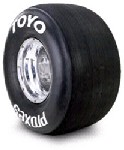 When a tire meets dry pavement on a highway, the two surfaces that are in contact ... rubber and asphalt ... have a high coefficient of friction, so your tires will have good traction. When a tire meets dry pavement on a highway, the two surfaces that are in contact ... rubber and asphalt ... have a high coefficient of friction, so your tires will have good traction.The amount of area in contact between two discrete surfaces does not affect the force of friction; whether the tire has treads or not is irrelevant. Some tires are completely smooth; tires like this are called 'slicks'. An increase in friction is not provided by the increase in surface area contacting the road; treads are just not used because they are not needed on a dry road. But friction can be increased in a different way. If the tires are spun very fast, the rubber will melt; as it hardens, it becomes rougher, with a higher coefficient of friction. This increases the friction force, and hence the traction. (Continued use wears them smooth again). So why doesn't your vehicle come with slick tires? The answer is that the roads are not always smooth and dry. If you were driving on slicks, the first time it started to rain you would skid right off the road! And driving in snow or mud? Forget it! When the roads are very wet, you are actually driving on a thin layer of water. Rubber and water have a very low coefficient of friction. You need to increase the coefficient of friction by allowing some of the water to escape, so that the tires are contacting wet pavement instead of just water. The coefficient of friction between rubber and 'wet pavement' is a larger number. So one purpose of treads is to allow water to escape. 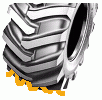 Tires also have treads so you can have traction in snow and mud. This works by allowing the snow or mud to get between the treads. You could think of this as increasing the coefficient of friction of the tire as a whole, because it is no longer as smooth. However, what is really happening is that the tires are now grabbing and pushing snow or mud backwards; this requires more power to be transferred to the tires from the engine. A greater force is applied, causing an greater 'equal-but-opposite' reaction force, which is what pushes the vehicle ahead. Better traction comes from more force being applied to the ground, not an increase in friction. Tires also have treads so you can have traction in snow and mud. This works by allowing the snow or mud to get between the treads. You could think of this as increasing the coefficient of friction of the tire as a whole, because it is no longer as smooth. However, what is really happening is that the tires are now grabbing and pushing snow or mud backwards; this requires more power to be transferred to the tires from the engine. A greater force is applied, causing an greater 'equal-but-opposite' reaction force, which is what pushes the vehicle ahead. Better traction comes from more force being applied to the ground, not an increase in friction. Incidentally, if you have a 2-wheel drive vehicle, there may be power going to only two wheels, but when you brake, all four wheels apply traction. You should use snow tires on all four wheels for better stopping in winter. Tire treads come in a variety of patterns and depths of tread, each designed for a particular type of driving:
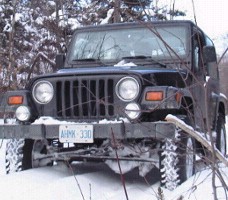 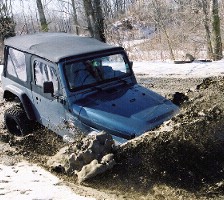 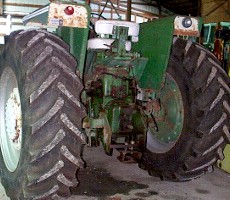
|
